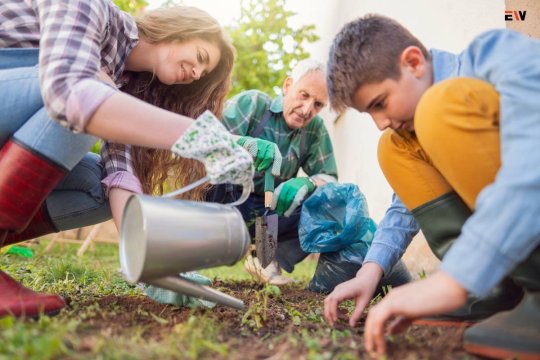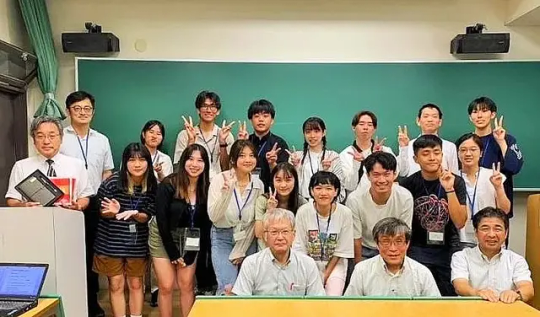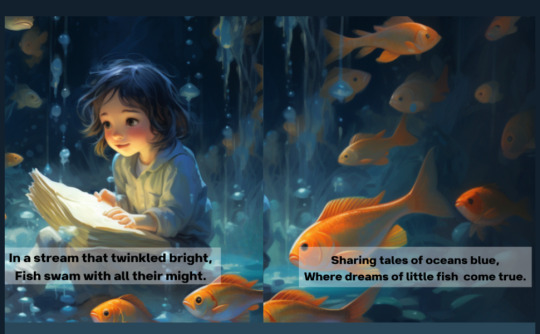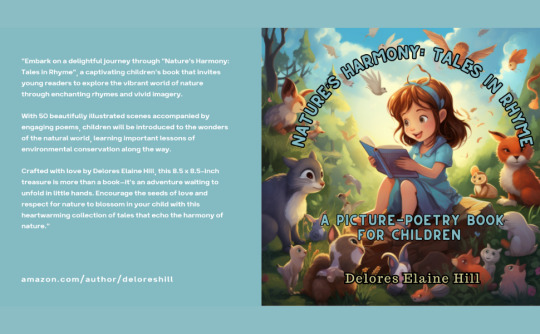#environmentaleducation
Text
Road salt, a stealthy pollutant, is damaging Michigan waters
In a dim hangar outside of Traverse City, towering piles of white crystals cast a glow in the twilight.
Salts like those stored at the Grand Traverse County Road Commission maintenance facility keep Michigan roads, parking lots, and sidewalks clear of ice in the winter, a prudent safety measure for motorists and pedestrians. The mobility benefits of salt for a car-centric society, though, have an undesirable environmental side effect that has built up over decades of use: extensive damage to ecosystems and infrastructure.
Chloride -- the catch-all term for salts -- does not discriminate. It hurts mayflies and freshwater mussels, taking out species at the base of the freshwater food chain. It acts as a chemical instigator, loosening metals and nutrients that are otherwise bound in sediment and freeing them to flow downstream, thus feeding toxic algae in troubled places like Lake Erie. As with sun on skin, excess salt accelerates infrastructure aging. The metals and concrete in bridges, roads, and cars deteriorate faster when exposed to salts.
The state issued its first water quality standards for chloride in 2019. Not written with infrastructure in mind, the standards are intended to protect fish, insects, and other freshwater species. But the state has not yet translated those standards into a plan for limiting chloride in the eight stream sections that already exceed the limit.
Developing those pollution diets takes years. In the interim, state regulators this year are directly asking municipalities with storm sewer systems to outline steps for controlling salt runoff from roads. Roads, however, are only part of the problem. Salt applied to parking lots and sidewalks also enters streams and groundwater. But regulators say that municipalities do not have the staff or budgets to oversee salt application on private property. In part, this is a consequence of state court rulings that have deterred cities from creating agencies to manage pollutants that are flushed from paved surfaces.
The best way to deal with salt pollution is to bar it entry -- not to allow it in the water in the first place. By and large, that outcome will rely on the widespread and voluntary adoption of salt-reducing practices by road agencies, shopping mall owners, apartment complex managers, and homeowners. Reducing salt use also hinges on societal shifts: public acceptance in urban areas of slower winter driving speeds and less driving in hazardous weather.
“You can think of chloride as a permanent pollutant in the water,” said Christe Alwin of the Michigan Department of Environment, Great Lakes, and Energy. “Once it’s there, there’s very little opportunity to treat it.”

(Photo © J. Carl Ganter/Circle of Blue)
Last year marked the 50th anniversary of the Clean Water Act, the landmark federal law that intended to give new life to waterways that were fouled by all manner of chemical and bacterial pollutants. The goal was to make rivers and lakes fishable and swimmable once again. The law, part of a package of national environmental reforms in the early 1970s, was transformative. By mandating pollution controls on wastewater treatment plants and industrial facilities, it marked a new era of environmental stewardship -- an era in which rivers and lakes were viewed not as dumping grounds but as civic assets that fostered recreation, ecological rebirth, and economic development.
Despite undeniable progress, substantial impediments to clean water remain. The law did little to stanch the flow of dispersed pollution that comes from roads, lawns, and farms. More waters today are fishable and swimmable, particularly in major metropolitan regions. But many, especially streams and rivers that drain agricultural regions, still are not. The consequences are measured in toxic algal bloom dead zones, human sickness, and the rising cost of water treatment.
Urban Areas on a High-Sodium Diet
A little salt can cause a lot of harm. The U.S. Environmental Protection Agency recommends water quality standards for rivers and lakes to prevent death and damage to fish, mussels, insects, and other aquatic species. For chloride, the EPA determined the threshold at which long-term damage could occur to be 230 milligrams per liter. That equals about one teaspoon of salt in five gallons of water.
Michigan has been slow to react to the salinization of its fresh water. The Department of Environment, Great Lakes, and Energy finalized water quality values for chloride only in 2019, three decades after the federal EPA published guidelines. Based on the numbers, EGLE determined last year that eight stream sections exceed the state threshold for chronic exposure, which is 150 milligrams per liter.
Those streams -- largely in the urban areas of southeast Michigan -- include the Shiawassee River (Genesee County), Thread Creek (Genesee County), Sashabaw Creek (Oakland County), Bishop Creek and the Upper Rouge River (Rouge River watershed), Belle River (St. Clair County), Rush Creek (Ottawa County), and County Line Drain (Arenac/Iosco County), which also exceeded the sulfate standard.
The next step for those stream sections is a regulatory tool known as a total maximum daily load, or TMDL, which caps pollution discharges. However, there is no timeline yet for developing the pollution diet for those streams, according to Kevin Goodwin, an aquatic biology specialist at EGLE.
It’s no mystery where most of the salts are coming from. Water softeners and fertilizers are sources of chloride, but the major contributor, Goodwin and others said, are the salts spread on roads, parking lots, and sidewalks to keep the pavement free from ice.
Salinization of streams is a problem across the United States, where at least 20 million tons of salt were used in 2021 for highway deicing. The U.S. Geological Survey studied 19 streams in eight states and the District of Columbia, including five Great Lakes states. The researchers found that chloride levels related to road salt increased in 84 percent of sampled streams. Increases were especially notable in urban areas with a large percentage of paved surfaces.
Those findings have been replicated at the state and local level. EGLE found chloride hot spots that align with high concentrations of highways and housing developments. The Huron River, a 900-square-mile watershed in southeast Michigan that flows through Ann Arbor, is one such area. For the last two decades the Huron River Watershed Council has tested streams for pollutants. Volunteers and staff now regularly take water samples from about 40 or 50 sites in the watershed, according to Ric Lawson, a watershed planner.
“We see that we have much higher [chloride] levels in our urban drainages,” Lawson said.
Following up on its stream samples, the Huron River Watershed Council did additional investigation at sites with abnormally high chloride levels. Were those salts coming from a particular source? Were there, as Lawson put it, any “smoking guns?”
In short, the council didn’t find any -- no leakage from a salt storage facility, no obvious surface runoff. No smoking guns. “So it does appear it’s been broad-based, long-term application,” Lawson said, referring to the salt source. “And probably, the salts moving through groundwater are how it's getting to the surface waters.”
Broad-based is the classic definition of non-point pollution. It’s the type of threat that the Clean Water Act, which focused on pollution coming from a pipe, is not at all equipped to address. The law exempts most sources of such pollution from regulation and oversight. That’s why non-point pollution is a long-term problem. Curbing it requires, in the case of salt, a voluntary change in practices.
Less Bounce, Less Scatter
Michigan’s ground transportation network is a lattice of roughly 122,000 miles of roads. To maintain these surfaces, the state’s road agencies balance three competing objectives, said Gregg Brunner, director of the Bureau of Field Services for the Michigan Department of Transportation (MDOT). Mobility, cost, and environmental protection.
Salt -- the sodium chloride form, in fact -- is the cheapest, most effective deicing agent available, Brunner said. On that measure it beats out magnesium chloride and potassium chloride.
A non-chloride option -- calcium magnesium acetate -- is on the market. But it costs about 40 times more than sodium chloride, which is mined locally, from deposits beneath Lake Erie.
The primary objective for MDOT and other road maintenance agencies is to use less of it. In pursuit of that goal, they participated in a work group to help EGLE develop salt management guidelines. Published in 2021, the guidelines are a compilation of voluntary “best management practices” that road agencies should strive to implement. The County Road Association of Michigan, which represents the 83 county road agencies, published a similar guide based on a survey of its members.
Read the complete article here
Source: Bridge Michigan
#pollution#protectourwaterways#friends of the rouge#clintonriverwatershed#huronriverwatershed#salt#calciummagnesiumacetate#protectourplanet#flintriverwatercoalition#cleanwater#environmentaleducation#pollution prevention
8 notes
·
View notes
Text
Do We Really Care About Climate Change?
Do We Really Care About Climate Change?
https://www.youtube.com/watch?v=sLtvK1S5rZE
Do We Really Care About Climate Change?
A 2024 report by Re.Climate outlines the current state of Canadians' opinions on climate change and climate policy. Age, Gender, region, and political ideologies are all key factors that determine how Canadians view climate change. In this video, we go through the highlights of the report and discuss what climate change perceptions have looked like across the country.
Check out the Report and webinar here:
Report: https://ift.tt/w0EUbiS
Webinar: https://youtu.be/hQy4vV2pIBI?si=z6pST1JIkAkeOCM1
Please visit my website to get more information: https://ift.tt/mHOvE84
🔔Subscribe for more stories about the environment, conservation, climate change, and the world we live in:
https://www.youtube.com/@DavidBysouth/?sub_confirmation=1
🔗Stay Connected With Me.
👉Instagram: https://ift.tt/zHKkGmh
👉Twitter (X): https://twitter.com/BysouthDavid
👉Linkedin: https://ift.tt/0EoblF9
👉Website: https://ift.tt/mHOvE84
=============================
✅ Other Videos You Might Be Interested In Watching:
👉 These Areas Are CRITICAL for Biodiversity Preservation
https://www.youtube.com/watch?v=bl31bqPz99g
👉 This Farming Practice Can Capture 2 BILLION TONNES of Carbon
https://www.youtube.com/watch?v=4mv6-xTRJ0g&t=5s
👉 Climate Change and Indigenous Food Systems: Challenges and Opportunities
https://www.youtube.com/watch?v=N0ASjpwakFA&t=9s
👉 You Won't BELIEVE what CLIMATE CHANGE is Doing to These Rivers
https://www.youtube.com/watch?v=I_AD_HwZx0o&t=9s
👉 The Nunavut Devolution in 3 Minutes
https://www.youtube.com/watch?v=jZQ6kT8vJRc&t=31s
=============================
✅ About David Bysouth.
Welcome to my YouTube Channel and thanks for checking out my video! There is so much to discover, learn about, and explore when it comes to the environment around us. After finishing my PhD in Integrative Biology and now working as a conservation professional, I have developed a passion for finding, learning about, and sharing stories about everything that makes our world interesting.
From stories about conservation projects, facts about the environment, profiles on incredible organizations, different ecosystems, eco-tourism and adventures, and everything in between, join me as we explore and learn about the environment around us.
=================================
#climatechange #politics #canada #carbonemissions #canadanews #travelvlog #environment #ecosystem #conservation
⚠️Disclaimer: I do not accept any liability for any loss or damage incurred from you acting or not acting as a result of watching any of my publications. You acknowledge that you use the information I provide at your own risk. Do your research.
Copyright Notice: This video and my YouTube channel contain dialogue, music, and images that are the property of David Bysouth. You are authorized to share the video link and channel and embed this video in your website or others as long as a link back to my YouTube channel is provided.
© David Bysouth
via David Bysouth https://www.youtube.com/channel/UC3ZyPtFAKgvbn7bkp2x7iHg
April 24, 2024 at 02:04AM
#conservationvlogs#biodiversityexplorations#natureadventures#environmentaleducation#eco-friendlylifestyletips#environmentaladvocacy#climateactioninitiatives
0 notes
Text
Happy Environmental Education Week! What are your thoughts on the environment on your college campus? Join us on FreezeCrowd.com to freeze with your science thoughts on water, trees, ozone, etc.💚🌎🌳❄️
1 note
·
View note
Text
Economics classes delve into the principles of microeconomics and macroeconomics, providing insights into decision-making, resource allocation, and market dynamics. Whether you're interested in pursuing a career in economics or gaining a better understanding of global issues, economics classes in Singapore offer valuable knowledge and skills.
#EcoEducation#EcoLearning#EcoCurriculum#EcoCourses#EcoInstitute#EcoStudies#EcoCommunity#EcoStudents#EcoProfessionals#EcoInsights#EcoForFuture#EcoTheory#EcoTeaching#EcoSolutions#EcoAwareness#EcoFriendly#EnvironmentalEducation#EnvironmentalStudies#SustainableLiving#GreenEducation#EcoLiteracy#EcoConsciousness#SingaporeEco#EcoSingapore#EcoForAll#EcoMovement#EcoAdvocacy#EcoResponsibility#EcoAction#EcoAware
0 notes
Text
#অ্যাঙ্কোভি#মাছ#anchovy#cormorant#বুবি#bobbybird#পেরুউপকূল#মাছেরভিডিও#মাছধরাশিকার#মাছধরারভিডিও#environmentaleducation#worldwide#explanation#biodiversity#banglavlogexplanation#educational#animalexplanation#information#informativevideo#teachingvideo#naturevideo#earthexplanation#শিকারীপাখি
1 note
·
View note
Text
#অ্যাঙ্কোভি#মাছ#anchovy#cormorant#বুবি#bobbybird#পেরুউপকূল#মাছেরভিডিও#মাছধরাশিকার#মাছধরারভিডিও#environmentaleducation#worldwide#explanation#biodiversity#banglavlogexplanation#educational#animalexplanation#information#informativevideo#teachingvideo#naturevideo#earthexplanation#শিকারীপাখি
0 notes
Text
Cultivating Sustainability: The Importance and Strategies of Environmental Education

In an era marked by environmental challenges, the role of environmental education becomes increasingly crucial. Environmental education empowers individuals and communities to understand, appreciate, and actively contribute to the well-being of the planet. This comprehensive exploration delves into the significance of environmental education, its goals, and strategies for fostering a collective commitment to environmental stewardship.
Understanding Environmental Education
Environmental education encompasses a diverse range of learning experiences designed to enhance individuals’ understanding of the environment, instill a sense of responsibility, and promote sustainable practices. It goes beyond traditional classroom settings, extending into community engagement, experiential learning, and advocacy initiatives. The overarching goal is to cultivate environmentally literate citizens who can make informed decisions for the benefit of the planet.
Key Goals
1. Promoting Environmental Awareness
Education on the environment aims to raise awareness about critical environmental issues, including climate change, biodiversity loss, pollution, and resource depletion. By fostering an understanding of the interconnectedness of ecological systems, individuals are better equipped to appreciate the importance of environmental conservation.
2. Instilling Environmental Ethics

Environmental education seeks to instill a sense of environmental ethics, emphasizing the responsibility of individuals and communities to act as stewards of the environment. This includes fostering a deep respect for nature, promoting sustainable practices, and considering the long-term impacts of personal and collective actions.
3. Building Scientific Literacy
A foundational aspect of Education on the environment is building scientific literacy. This involves equipping individuals with the knowledge and skills to critically evaluate environmental information, understand scientific principles, and engage in evidence-based decision-making related to environmental issues.
4. Encouraging Sustainable Practices:
The adoption of sustainable practices is a core objective of education on the environment. This includes promoting energy conservation, waste reduction, sustainable agriculture, and responsible consumption. By encouraging sustainable behaviors, environmental education contributes to mitigating human impact on the environment.
5. Fostering a Connection to Nature:
Education on the environment aims to foster a deep and personal connection to nature. Through experiential learning, outdoor activities, and ecological exploration, individuals develop a sense of appreciation for the natural world, which, in turn, contributes to a desire to protect and preserve it.
Strategies for Effective Education
1. Incorporating Experiential Learning
Experiential learning, such as field trips, nature walks, and hands-on activities, is a powerful strategy in Education on the environment. These experiences provide tangible connections to environmental concepts and foster a sense of curiosity and discovery.
2. Integrating Interdisciplinary Approaches
Education on the environment benefits from an interdisciplinary approach that integrates concepts from various fields such as science, geography, ethics, and social studies. This holistic approach enables learners to understand the complexity of environmental issues from multiple perspectives.
3. Utilizing Technology and Multimedia

Technology and multimedia resources play a pivotal role in enhancing the effectiveness of environmental education. Virtual tours, interactive simulations, documentaries, and online platforms facilitate engaging and accessible learning experiences.
4. Promoting Outdoor and Nature-Based Education
Outdoor education programs that immerse learners in natural environments are effective in promoting a connection to nature. Whether through school gardens, outdoor classrooms, or wilderness experiences, these initiatives provide valuable hands-on learning opportunities.
5. Encouraging Community Engagement
Education on the environment extends beyond individual learning to encompass community engagement. Collaborative projects, environmental action campaigns, and community-based initiatives empower learners to apply their knowledge in real-world scenarios, fostering a sense of environmental responsibility at the community level.
6. Incorporating Citizen Science Projects
Citizen science projects involve individuals in scientific research and data collection. By participating in such projects, learners actively contribute to environmental monitoring and research efforts, fostering a sense of agency and empowerment.
7. Establishing Environmental Clubs and Initiatives

Schools, universities, and community organizations can establish environmental clubs and initiatives. These platforms provide a space for like-minded individuals to collaborate, share ideas, and collectively work towards environmental conservation goals.
8. Cultivating Critical Thinking Skills
Education about the environment emphasizes developing critical thinking skills. By encouraging learners to analyze environmental issues, evaluate the credibility of information, and consider diverse perspectives, educators foster the capacity for informed decision-making.
9. Promoting Environmental Advocacy
Education on the environment encourages individuals to become advocates for positive environmental change. This involves empowering learners to communicate effectively, raise awareness, and actively participate in discussions and initiatives that promote sustainability.
10. Continuous Learning and Professional Development
Environmental education is an evolving field, and educators benefit from continuous learning and professional development. Staying informed about current environmental issues, pedagogical approaches, and educational resources ensures that educators can deliver relevant and impactful lessons.
Conclusion
Education on the environment is a catalyst for positive change, equipping individuals with the knowledge, skills, and values needed to address the complex environmental challenges of our time. By fostering environmental awareness, ethical considerations, and sustainable practices, environmental education contributes to building a global community dedicated to the well-being of the planet.
As educators, community leaders, and policymakers embrace the principles of education on the environment, they play a pivotal role in shaping a future where individuals are empowered to make choices that prioritize environmental sustainability. Through collaborative efforts and a commitment to lifelong learning, we can cultivate a generation of environmentally literate citizens capable of making informed decisions for a healthier and more sustainable planet.
Read More: Unique Learning System: Tailoring Education to Every Mind
#environmentaleducation#sustainability#Empowerment#ClimateAction#educationforall#TogetherWeCan#gogreen
1 note
·
View note
Text

dayitwa.com
"Dayitwa Education for Social Bookmarking is a pioneering initiative aimed at harnessing the power of social bookmarking to revolutionize education and foster social change. Through Dayitwa, individuals and communities are provided with a platform to curate and share educational resources, ranging from articles and videos to academic papers and online courses. By leveraging the collective intelligence of users, Dayitwa promotes collaboration, knowledge sharing, and continuous learning.
#EducationForAll#CommunityLearning#DigitalLiteracy#OnlineCourses#STEMEducation#SocialJustice#LifelongLearning#OpenAccess#InclusiveEducation#GlobalCitizenship#EnvironmentalEducation#EmpowermentThroughKnowledge#CulturalHeritage#WellnessEducation#EntrepreneurshipSkills#CriticalThinking#DigitalSkills#21stCenturySkills
1 note
·
View note
Text
EGLE at youth fishing events this summer focusing on assessing fish contaminants
Source: EGLE newsroom
The Michigan Department of Environment, Great Lakes, and Energy (EGLE) was awarded a $600,000 grant from the U.S. Environmental Protection Agency (EPA) to assess contaminants in fish in several areas of Michigan -- with a particular focus on water bodies where youth fishing events have historically or are currently taking place.

Brandon Armstrong, EGLE aquatic biology specialist, filets a rainbow trout for a successful angler at the Wayne County Parks youth fishing derby at Waterford Bend Recreation Area in Northville.
The primary goal of EGLE’s Fish Contaminant Monitoring Program is to collect data that are used to inform the Michigan Department of Health and Human Services’ Eat Safe Fish guide. This grant helps EGLE meet this goal by providing funds to assess contaminants in fish from water bodies nearby communities that may be disproportionately impacted by environmental hazards, often referred to as Environmental Justice areas. EGLE will be attending youth fishing events near these areas to collect samples for contaminant monitoring.
Upcoming events include:
The Public Safety Youth Derby at Muskegon Lake in Muskegon, from 4 p.m. to 6:30 p.m. on Thursday, June 15.
The Buell Lake Fish Camp at Buell Lake Park in Clio from 5:30 p.m. to 8 p.m. on Friday, June 16.
The Brighton Optimist Club Derby at Brighton Mill Pond in Brighton from 8 a.m. to 11 a.m. on Saturday, June 17.
The Global Water Festival at Canal Park in Grand Rapids from noon to 4 p.m. on Saturday, July 29.
The Thread Lake Fish Camp at Thread Lake’s McKinley Park in Flint from 5:30 p.m. to 8 p.m. on Friday, August 11.
Events that already have taken place as part of the grant are:
Wayne County Parks Derby at Waterford Bend Park in Northville.
Saginaw County Parks’ Catch Me If You Can family fishing festival at Haithco Lake in Saginaw Charter Township.
The Hesse-Earl Youth Fishing Program at Hawk Island Park in Ingham County.
Fish will also be collected under this grant from additional water bodies located near Environmental Justice areas including Reflection Pond in Riverview, Spring Valley Pond in Kalamazoo, Richmond Park Pond in Grand Rapids, Battjes Park Pond in Wyoming, Galloway Lake, Osmun Lake and the Clinton River in Pontiac, Muskegon Lake and Little Black Creek in Muskegon, WmP Thompson Pond in Port Huron, Carpenter Lake in Southfield, the St. Joseph River and the Paw Paw River in Benton Harbor, and the St. Marys River in Sault Ste Marie.
Source: https://www.michigan.gov/egle/newsroom/mi-environment/2023/06/13/egle-at-youth-fishing-events-this-summer-focusing-on-assessing-fish-contaminants
#fishmonitoring#protectourwaterways#environmentaleducation#clintonriverwatershed#flintriverwatercoalition#friends of the rouge#huronriverwatershed#cleanwater#pollution prevention#protectourplanet#fishing#michiganfishing#environmental justice#eatsafefish
3 notes
·
View notes
Text
SMALL SPACES BIG IMPACT: Creating Habitat for Threatened Wildlife
SMALL SPACES BIG IMPACT: Creating Habitat for Threatened Wildlife
https://www.youtube.com/watch?v=-OXXp4TW7PI
As the world continues to deal with the impact of urban sprawl and development, urban conservation projects are becoming more important. The team at Conservation Halton has established a small conservation area called Loyalist Woods in Oakville, Ontario with important benefits for threatened species, carbon sequestration, biodiversity, water purification, and more.
Learn More:
Loyalist Woods: https://ift.tt/YOXoLD6
Please visit my website to get more information: https://ift.tt/GkB5meV
🔔Subscribe for more stories about the environment, conservation, climate change, and the world we live in:
https://www.youtube.com/@DavidBysouth/?sub_confirmation=1
🔗Stay Connected With Me.
👉Instagram: https://ift.tt/g3kBHp0
👉Twitter (X): https://twitter.com/BysouthDavid
👉Linkedin: https://ift.tt/f9MP1NZ
👉Website: https://ift.tt/GkB5meV
=============================
✅ Other Videos You Might Be Interested In Watching:
👉 These Areas Are CRITICAL for Biodiversity Preservation
https://www.youtube.com/watch?v=bl31bqPz99g
👉 This Farming Practice Can Capture 2 BILLION TONNES of Carbon
https://www.youtube.com/watch?v=4mv6-xTRJ0g&t=5s
👉 Climate Change and Indigenous Food Systems: Challenges and Opportunities
https://www.youtube.com/watch?v=N0ASjpwakFA&t=9s
👉 You Won't BELIEVE what CLIMATE CHANGE is Doing to These Rivers
https://www.youtube.com/watch?v=I_AD_HwZx0o&t=9s
👉 The Nunavut Devolution in 3 Minutes
https://www.youtube.com/watch?v=jZQ6kT8vJRc&t=31s
=============================
✅ About David Bysouth.
Welcome to my YouTube Channel and thanks for checking out my video! There is so much to discover, learn about, and explore when it comes to the environment around us. After finishing my PhD in Integrative Biology and now working as a conservation professional, I have developed a passion for finding, learning about, and sharing stories about everything that makes our world interesting.
From stories about conservation projects, facts about the environment, profiles on incredible organizations, different ecosystems, eco-tourism and adventures, and everything in between, join me as we explore and learn about the environment around us.
=================================
#climatechange #conservation #agriculture #biodiversity #carbon #environment #hike #travelvlog #soil #restoration
⚠️Disclaimer: I do not accept any liability for any loss or damage incurred from you acting or not acting as a result of watching any of my publications. You acknowledge that you use the information I provide at your own risk. Do your research.
Copyright Notice: This video and my YouTube channel contain dialogue, music, and images that are the property of David Bysouth. You are authorized to share the video link and channel and embed this video in your website or others as long as a link back to my YouTube channel is provided.
© David Bysouth
via David Bysouth https://www.youtube.com/channel/UC3ZyPtFAKgvbn7bkp2x7iHg
April 19, 2024 at 10:00PM
#conservationvlogs#biodiversityexplorations#natureadventures#environmentaleducation#eco-friendlylifestyletips#environmentaladvocacy#climateactioninitiatives
0 notes
Text

FOR MORE INFORMATION: www.richardlouv.com
#vitaminn#vitaminnchallenge#naturedeficitdisorder#lastchildinthewoods#childrenandnature#ourwildcalling#richardlouv#wild#biophillia#future#thenatureprinciple#health#education#environmentaleducation#outdooreducation#ecopsychology#ecotherapy#childrenandnaturenetwork#richardlouvprize
1 note
·
View note
Text
Okayama University's Taiwan Exchange Program Triumph

Exploring Environmental Management: An Eight-Day Exchange Program
The Environmental and Social Infrastructure Environmental Management Course at the Faculty of Engineering of Okayama University (Headquarters: Kita-ku, Okayama City, President: Yasutomo Nasu) recently hosted a significant exchange program from September 3rd to 10th, 2023. This program was conducted through the "Student Exchange Program between Okayama University and National Taiwan University – Research Experiences in the field of Environmental Management."
Fostering International Connections
Seven second-year students and two third-year students from the Environmental Management Course in the Faculty of Engineering at Okayama University participated in this program, along with eight undergraduate students from National Taiwan University. Professor Shao-Yiu Hsu, a leading instructor, also visited the university.
Annual Interactive Exchange
This exchange project has become an annual interactive program. When students from National Taiwan University visit Okayama University, they receive support from the JST Sakura Science Plan. On the other hand, when Okayama University students visit Taiwan, they are supported by Wesco Co., Ltd.
Collaborative Learning Experience
The program held at Okayama University included seven second-year students and two third-year students from the Department of Environmental and Social Infrastructure Environmental Management in the Faculty of Engineering. Additionally, eight undergraduate students from National Taiwan University and Professor Shao-Yiu Hsu joined as leading faculty.
Opening Ceremony and Cultural Exchange
At the opening ceremony, Dean Tokuo Namba, Dean of Engineering, delivered an opening greeting. Hidenori Morita, Director of the Environmental Management Course, introduced the course, and Okayama University students introduced Okayama's culture.
Comprehensive Learning Program
Over the eight-day program, participating students attended two lectures each day, led by esteemed instructors. These included Professor Shinichi Nishimura, Associate Professor Takayuki Juku, Professor Yasuaki Kuki, Professor Sunshi Moriya, Associate Professor Yasuhiro Matsui, Professor Morihiro Maeda, Professor Kazuyoshi Nakata, Assistant Professor Mitsuki Katsuhara, and Associate Professor Ryoji Kudo.
Field Trips and Hands-On Experience
During the program, participants had the unique opportunity to experience cutting-edge research activities through lab tours. They also shared their experiences and knowledge through research presentations.
Exploring Environmental Challenges
A significant part of the program involved field trips. Participants visited the Odagawa River replacement construction site, where they received insights into flood occurrence mechanisms and prevention measures. Director Hamada of the Takahashi River and Odagawa Emergency Flood Control Measures River Office, Chugoku Regional Development Bureau, Ministry of Land, Infrastructure, Transport, and Tourism, explained this.
Promoting Sustainability
Additionally, with the cooperation of the Shikoku Land Improvement Research and Management Office, Chugoku-Shikoku Agricultural Administration Bureau, Ministry of Agriculture, Forestry, and Fisheries, participants visited the Kagawa Irrigation Doki River coastal area. Here, they learned about environmentally friendly construction methods for agricultural canals, aquatic animal conservation, and agriculture. They also received an explanation about the operation of irrigation water and an overview of Manno Pond, a World Irrigation Facility Heritage Site.
International Collaboration and Future Prospects
Through these diverse activities, students from both universities not only gained insight into the philosophy of environmental research but also exchanged ideas in English with students from other countries. Moreover, this exchange allowed both institutions to showcase their educational and research accomplishments.
As a result, discussions about future faculty/student exchanges and joint research initiatives were fostered. Okayama University hopes to further promote overseas exchange among students and faculty in the Environmental Management Course based on this successful program.
Sources: THX News & National University Corporation Okayama University.
Read the full article
#Cross-CulturalLearning#EnvironmentalEducation#EnvironmentalManagementCourse#EnvironmentalResearchProgram#InternationalEnvironmentalStudies#InternationalStudentExchange#Japanese-TaiwaneseCollaboration#OkayamaUniversityExchangeProgram#StudentExchangeExperience#TaiwanUniversityCollaboration
0 notes
Text
Unveiling Earth's Atmosphere | Understanding Climate and Layers | Brainita UPSC
youtube
Explore the fascinating world of Earth's atmosphere in our latest video! Join us as we dive into the concept of climate and unravel the mysteries of the atmosphere. Discover the various particles that inhabit our skies and how they play a pivotal role in shaping our weather patterns.
0 notes
Text





#ChildrensBooks#NatureLovers#PoetryCommunity#IllustratedBooks#KidLit#ReadingCommunity#NatureHarmony#PictureBook#YoungReaders#BookRelease#EcoFriendly#EnvironmentalEducation#StoryTime#LiteracyMatters#BookLovers#CreativeLearning#ParentingWin#EducationalBooks#ChildrensLiterature#NewReleaseBooks
0 notes
Text
instagram
Are you interested in studying Environmental Engineering?
Environmental engineers work to find answers to environmental problems that affect society's and the environment's health and well-being. Environmental engineers can work as a member of society, as pollution control officials, designers, teachers, planners, and researchers. You might also look for work in industries such as pharmaceuticals, manufacturing, and utilities.
If you are still confused about whether to pursue this professional alternative, talk with ED4WO experts. Based on your interests, we will aid you in locating related courses, colleges, and countries.
To learn more about your field, please visit our website. You can also get in touch with us before making a decision.
Contact Us
Via phone
8010-409-409
#environmentalengineering#environmentaleducation#engineering#environmental#engineeringstudent#sustainability#science#engineers#highereducation#educationmatters#studyintheuk#studyincanada#studyinusa#studyinaustralia#overseaseducation#study#studyabroad#studyabroadlife#abroad#studyoverseas#studyvisa#canadastudentvisa#studentvisa#applyforstudyvisa#visaexperts#bestvisaguidance#ED4WO#Instagram
0 notes